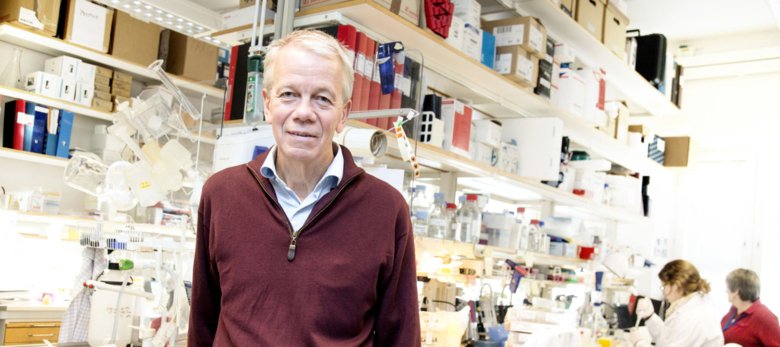The health care organization in Stockholm and clinical research – a question for everyone

The way the healthcare is organized determines the conditions for conducting and implementing clinical research. In Region Stockholm, the healthcare organization has changed substantially over the past decade due to political decisions, and we do not yet know what the new regional management will look like after this year's elections nor how it will change the healthcare organization.
By Lars Klareskog, professor at the Division of Rheumatology, Department of Medicine, Solna.
What we do know is that we, as clinical researchers and also working in healthcare, need to understand how healthcare and clinical research are connected and then do our best within the existing organization. In addition, we must try to influence this organization if we see that research, and thus the quality of future care, is threatened.
For a long time, one of Sweden's - and our own - international research advantages have been the opportunity to follow patients with chronic diseases over the entire course of the condition, from the first symptoms, through diagnosis, therapy evaluation to analysis of any long-term effects of disease and co-morbidity. This has been possible due to a coherent healthcare system and a structure where all residents are offered the same healthcare. In many other countries, not least in the United States, such follow-up is much more difficult due to a fragmented healthcare system. This has meant that, through a fine follow-up system with registers and biobanks, we have been able to contribute significantly to the development of knowledge and been able to create a unique base for our clinical research and thus, also a base for international collaborations and national and international funding.
What has happened in Region Stockholm over the past 10 years, is that this coherent organization has been transformed due to a system with many new, mostly private, clinics having been established in the so-called healthcare selection (vårdval) system. The healthcare organization has thus become fragmented which makes it more difficult to collaborate for clinical research. This has meant that our previous international competitive advantage in clinical research has disappeared in several cases.
So – what to do? One possibility is to contribute to the creation of so-called academic specialist centres, where open specialist care can be provided outside of the emergency hospitals but with a sufficient concentration of clinical researchers and a structure that promotes collaboration between care and research. Such a specialist center exists today, located at Torsplan, close to our research premises for epidemiology and laboratory research in Solna. So far, there are rheumatology, neurology, diabetes and obesity clinics, which have the opportunity to collaborate with the corresponding departments at Karolinska. To work for the establishment of further such academic specialist centres, also on the southern side, is something we should be able to propose to the new regional management. At the same time, our hope is that resources for hospital beds and time for collaboration between healthcare and research will be provided to the hospitals, including Karolinska.
But the fact is that many of the patients we want to follow, and whose diseases we want to understand and treat, will be outside of the Karolinska University Hospital and this is something we have to get used to. New tools are thus needed for clinical research. I myself believe that we should work with different types of digital systems where the patients themselves can register their symptoms and make the decision where blood samples should be drawn, and the medical examinations carried out.
But the most important part that needs to be developed – and in some cases re-created – concerns time and space for clinical creative environments where researchers and healthcare workers (often the same people) can meet, discuss, have time to think, plan new projects and encourage and train new generations of clinical researcher. In an investigation carried out by the undersigned and Claes-Roland Martling a few years ago, we put forward proposals for how such environments could be developed. In a best-case scenario, the time has now come to discuss this further with the new regional management, at our own institution and at KI. So, my final conclusion is that we should all get involved in how healthcare and thus, clinical research and teaching can be developed, not just believe that what is happening is out of our control.
Lars Klareskog,
still active professor at the Division of Rheumatology, Department of Medicine, Solna.
